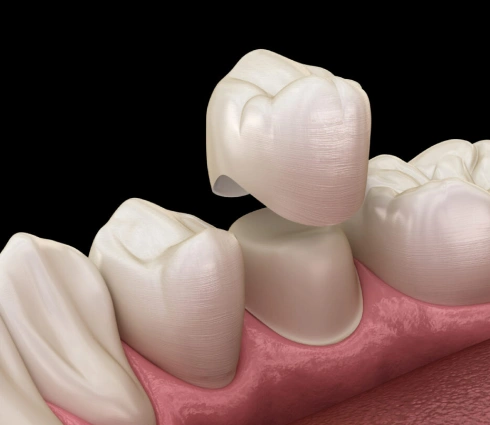
Crown Lengthening
Enhance Your Smile with Crown Lengthening
Reasons for Crown Lengthening
- Restoration of Damaged Teeth – Conditions like periodontal disease, trauma, or decay can cause significant damage to teeth, especially when the damage occurs beneath the gum line. Crown lengthening helps prepare the area for restoration, allowing for effective correction of the damaged tooth.
- Cosmetic Purposes – Excess gum tissue can make teeth appear unnaturally short and may increase the risk of periodontal infections. Removing this extra tissue restores a balanced, healthy appearance and enhances the overall aesthetics of your smile.
- Dental Crowns – Crown lengthening creates more space between the supporting jawbone and the dental crown. This prevents damage to the surrounding gum tissue and bone, ensuring a better fit and longer-lasting result for the new crown.
What Does Crown Lengthening Involve?
Crown lengthening is typically performed under local anesthesia to ensure comfort during the procedure. The duration of the procedure depends on the number of teeth involved and whether any bone needs to be removed in addition to the soft tissue. If you already have dental crowns, they will be removed prior to the procedure and replaced immediately afterward.
To begin, your dentist will make small incisions in the gum tissue to gently separate the gums from the teeth. While the focus may be on one tooth, neighboring teeth are often treated as well to ensure a more uniform appearance. This access allows your dentist to reach the roots of the teeth and the underlying bone.
In some cases, removing just a small amount of gum tissue is enough to expose the necessary portion of the tooth for a crown. However, if more exposure is required, a small amount of bone may also be removed. This is typically done using specialized hand instruments and rotary tools that function similarly to a dental drill.
After the procedure, your teeth will appear longer because the gum tissue has been repositioned. To aid in healing, your dentist will apply a periodontal bandage to the surgical area, reducing the risk of infection. Pain medication may be prescribed, and an antimicrobial mouth rinse like chlorhexidine can help prevent bacterial growth. Full healing typically takes two to three months.
If you have any questions about crown lengthening or would like to schedule a consultation, feel free to contact our office.